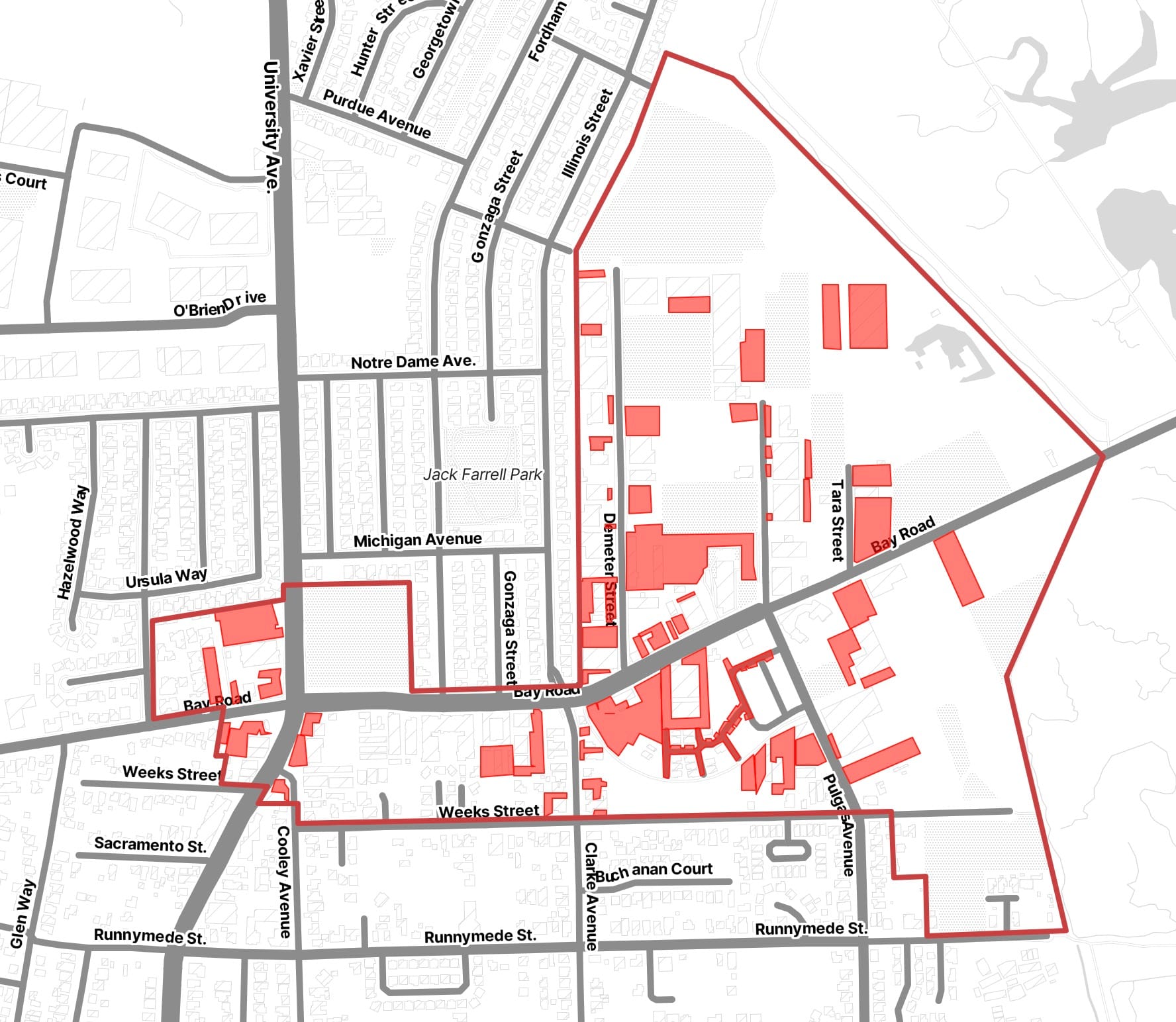I argue that both on-street and off-street parking in the RBD should be priced appropriately to foster the vibrant, walkable downtown with shops and restaurants that East Palo Alto residents have long desired.
Parking problems and the desire for a downtown with restaurants and retail are topics that come up often amongst East Palo Alto residents. In December 2024, East Palo Alto's City Council approved the Ravenswood Business District specific plan update, which plans for a downtown to be concentrated in the northeast portion of East Palo Alto. I am happy with these development off-street parking policies that were set in the RBD specific plan because they encourage active frontages and a walkable downtown that is interesting for shoppers. In addition to managing off-street parking, the City needs to charge (meter) for on-street parking in order to create the walkable RBD downtown.
Current Problems Before Buildout of RBD
The Ravenswood Business District currently feels more like a sea of surface parking than an interesting downtown; it can take 2 minutes to walk between different locations (Fig 1). When I walk on Bay Road, there is not much interesting because surface parking lots actually make up around half of the walk.
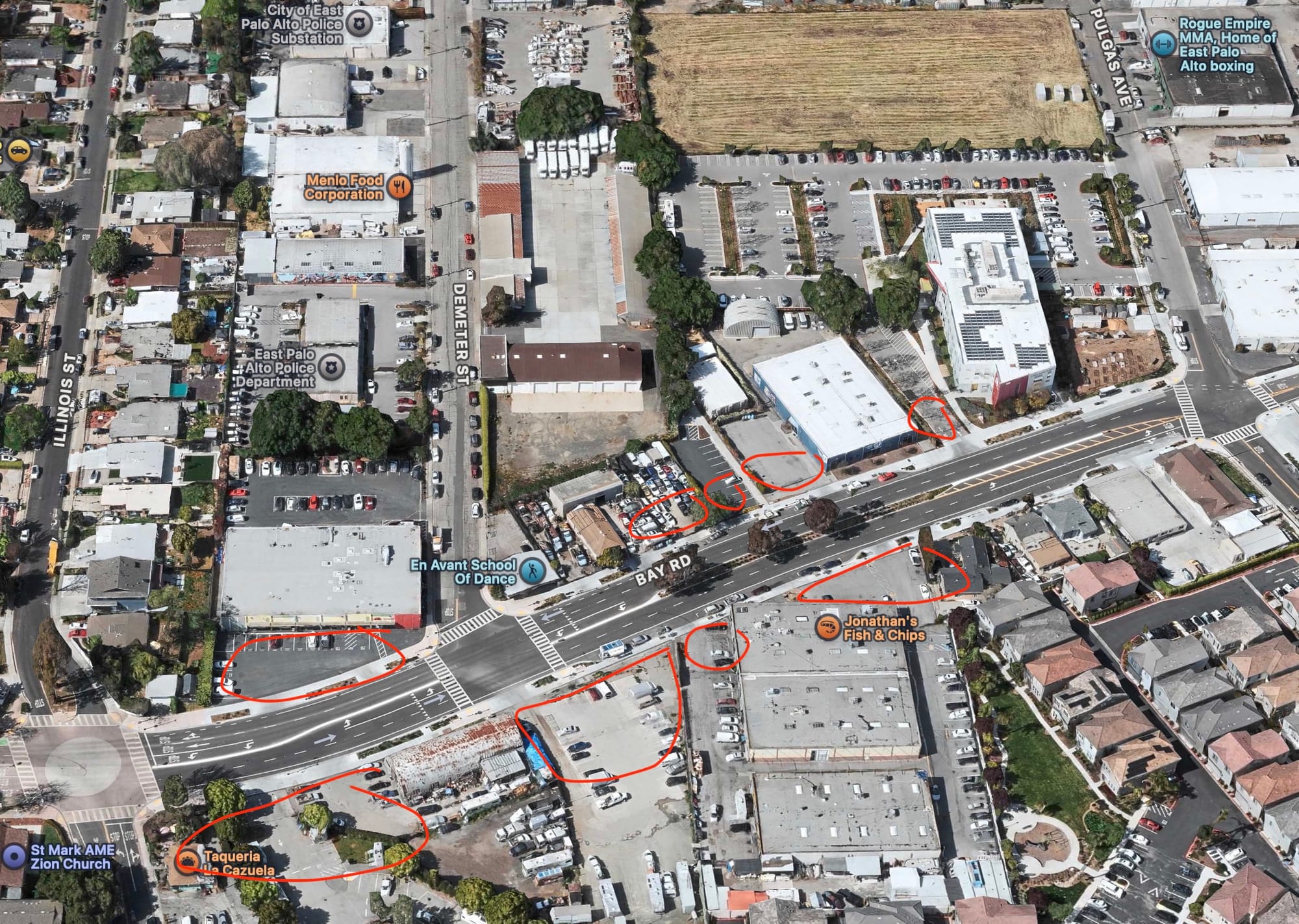
Donald Shoup's book "The High Cost of Free Parking" (page 159) mentions that:
Off-street parking requirements increase the supply and thus reduce the price of parking in the Central Business District, but they also have other consequences. They increase the cost of all development, reduce density by preempting land from other uses, and increase traffic both within the CBD and on the routes to it. Parking requirements thus reduce the CBD's attractiveness by undermining the essential features that make it attractive - high density and accessibility.
I quantified the amount of off-street parking in the RBD to be 15% by plotting out the current off-street parking and publishing it onto the Parking Reform Network's Parking Lot Map.
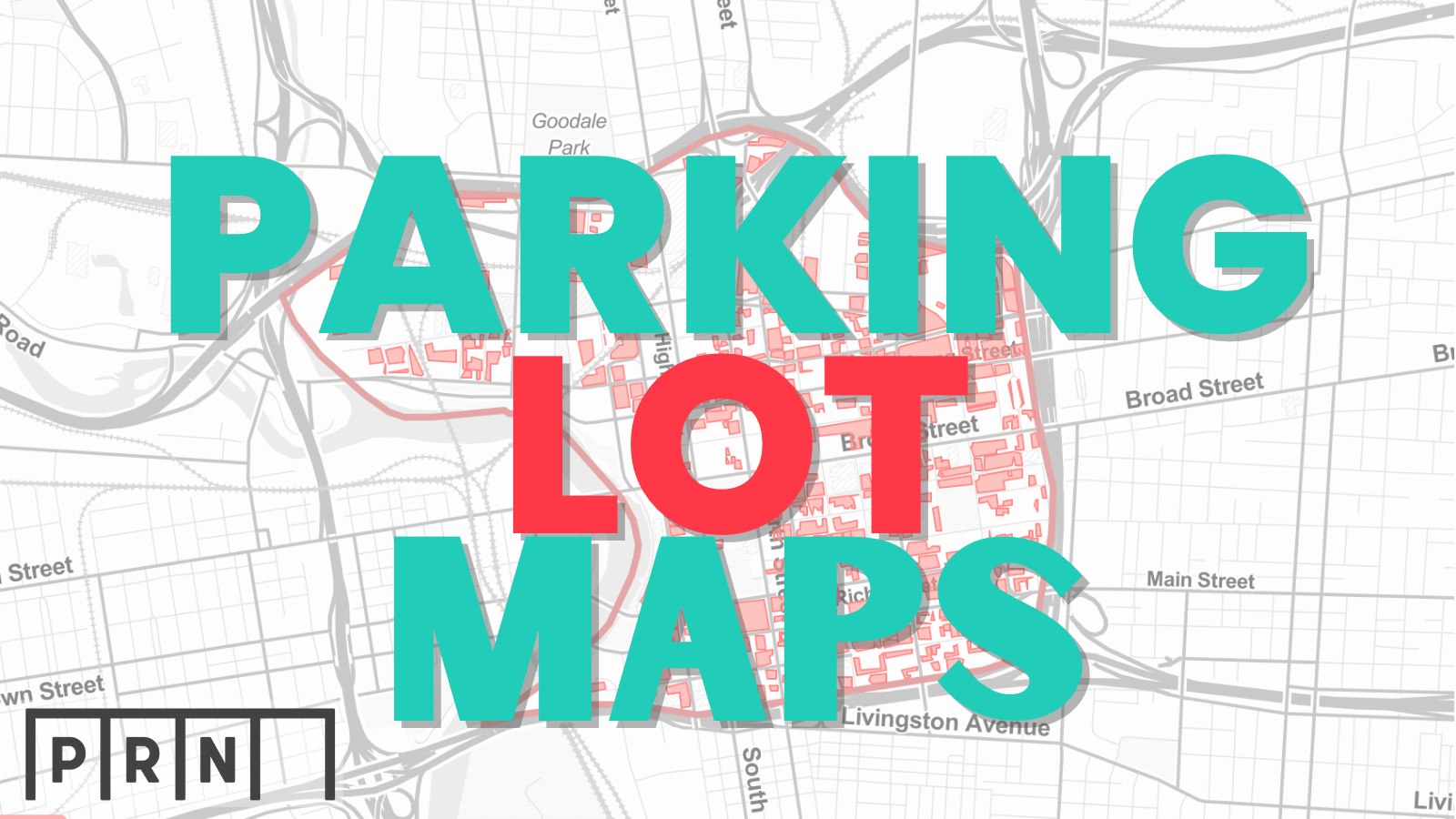
This map underestimates the future percentage of off-street parking because it does not count vacant lots as off-street parking, unless they are currently used to park vehicles.
Charging for On-Street Parking
I think the City of East Palo Alto needs to charge for on-street parking in the Ravenswood Business District, in order to efficiently manage the on-street parking supply and to encourage multimodal transportation. As long as parking is free, RBD customers will prefer to drive since the "free" parking appears cheaper than paying for a transit ride. As a result, vehicle trips will appear high and private developers will feel pressure from the community and their lenders to build more (free) off-street parking. This leads to a downward cycle where more off-street parking incentives more vehicle trips, which leads to developers wanting to build more off-street parking. Before you know it, half of the downtown will just be surface parking lots which makes the retail uninteresting and the RBD business will suffer and stores may close. All of this works counter to what East Palo Alto residents want: a vibrant, interesting, walkable downtown with stores and restaurants.
I propose that on-street parking in the RBD be metered, so that some vehicle trips will be replaced with walking, biking, transit, or carpooling. We can model off of Redwood City and San Francisco's central business district parking policies where the price is set such that we target an 85% occupancy rate of on-street parking. This way, vehicles are not spending time cruising for parking, which increases traffic and pollutes the air. Moreover, the funds from the metered on-street parking must be used to improve the specific blocks where they are charging: street cleaning, sidewalk power washing, trash clean ups, etc. In "The High Cost of Free Parking," Donald Shoup makes an argument that charging for on-street parking is in the stores'/restaurants' interests because it incentivizes their own employees to park farther at lower parking costs (longer durations), which makes parking available for the customers closer to the store (shorter durations). This leads to a higher turnover rate of on-street parking which is more efficient.
Charging for Off-Street Parking
I also encourage private developments in the RBD to charge for off-street parking, in order to meet the 40% reduction traffic demand management (TDM) requirements imposed by the City of East Palo Alto. The RBD specific plan gives developers this flexibility (page 286):
Paid Parking. Commercial developments may establish off-street
paid parking programs. Paid parking works best if charged daily (vs.
monthly). Paid parking at a commercial development site is a
system where employees or visitors pay a small daily fee to park
their vehicles on-site. This fee-based approach helps manage
parking demand, encourages the use of alternative transportation
options, and supports the site's overall transportation management
goals. The nominal charge is typically designed to be affordable for
employees while promoting more sustainable commuting habits.
Good Parking Policies from the RBD Specific Plan
There are things that I like about the RBD specific plan policy that aim to decrease the number of parking spots.
Parking Minimums Instead of Parking Maximums
Our City Council / Planning Commission changed it to a parking maximum rather than a parking minimum. This subtle shift (Table 8-3 from the RBD specific plan) is great because developments will not be required to create large off-street parking lots, which would kill the walkability of stores. This way, stores can be placed adjacent to each other.
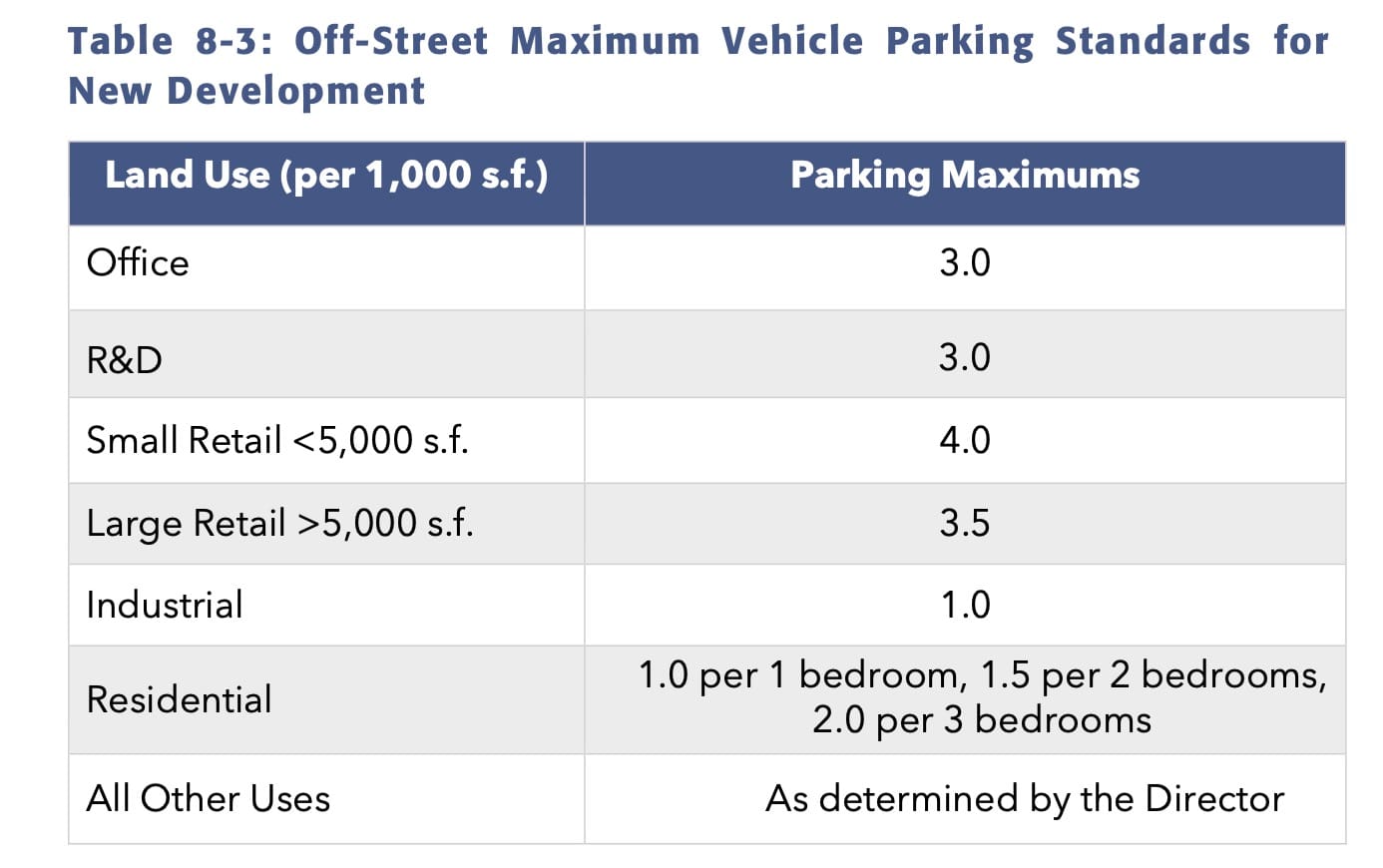
Active Frontages
The RBD plan also requires active frontages on certain streets such as Bay Road. This means that parking is not allowed in front of the stores like how many of the buildings currently are situated.
Parking in Setbacks. Surface parking (excepting ADA-required parking) is prohibited within 20’ of the front property line (if it faces a public street). (page 134 of RBD Specific Plan).
Summary
Next week our City Council does a first reading of a residential parking permit (RPP) program. I am in favor of this policy for the reasons mentioned in my other blog post:
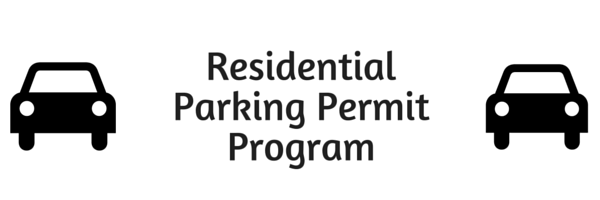
At the same time, the RPP does not put a policy in place for the central business district of the city because it is not primarily residential in nature. I strongly encourage the City to create a policy to charge for on-street parking in the RBD before developments are proposed. That way, new development proposals see a path forward to reducing their off-street parking, which will decrease vehicle trips and result in a more walkable downtown.
